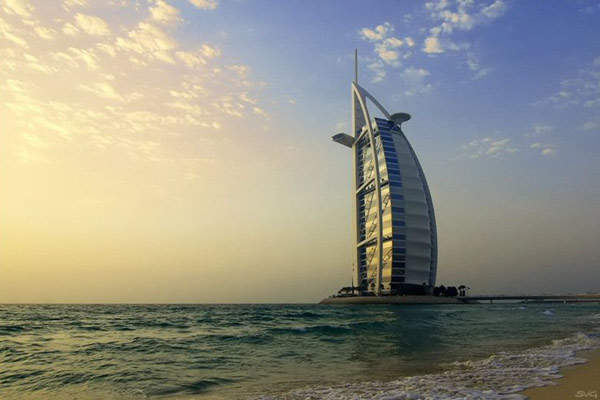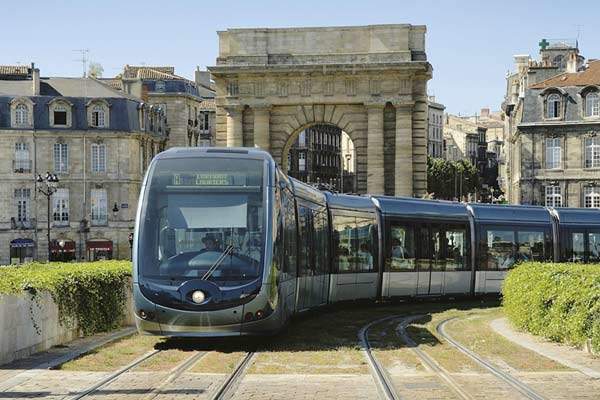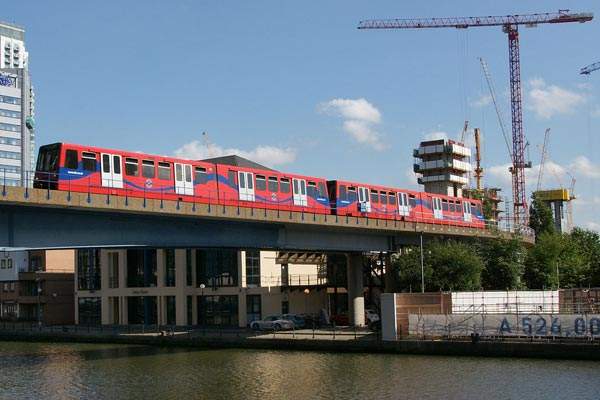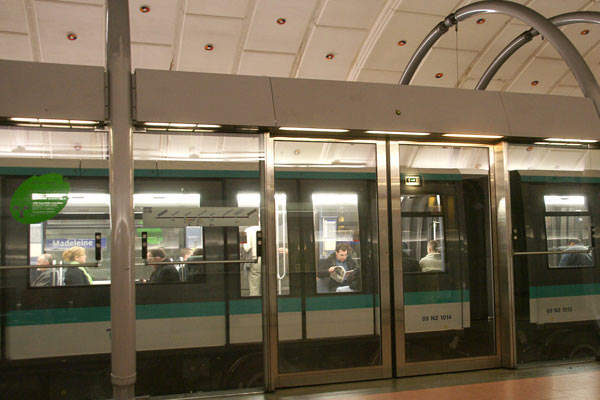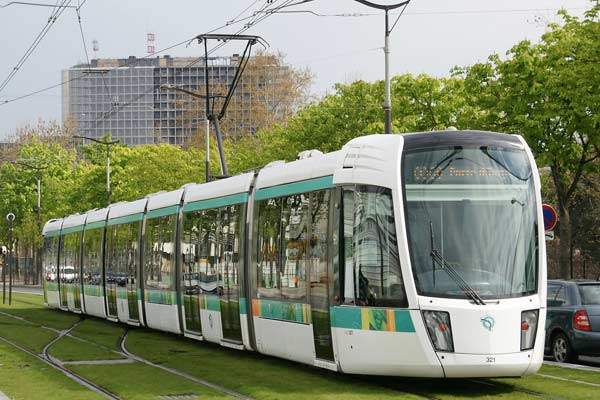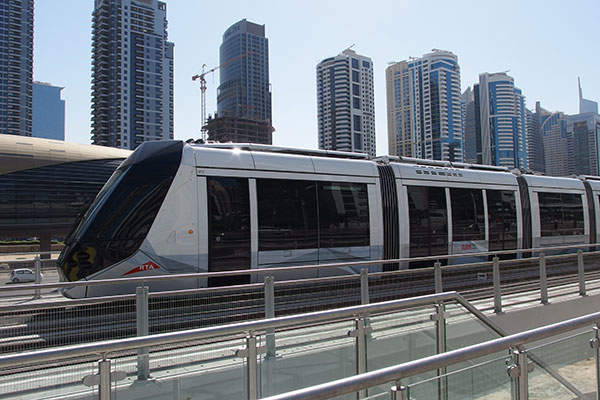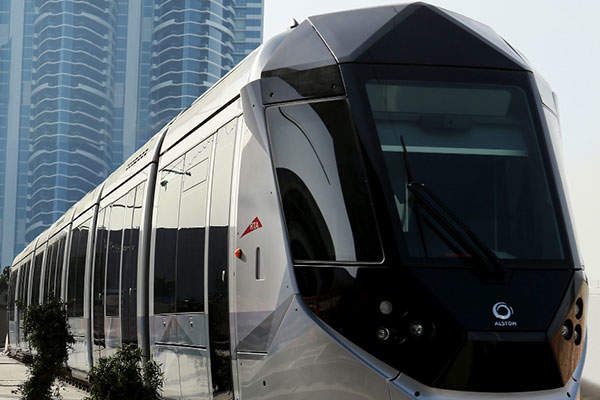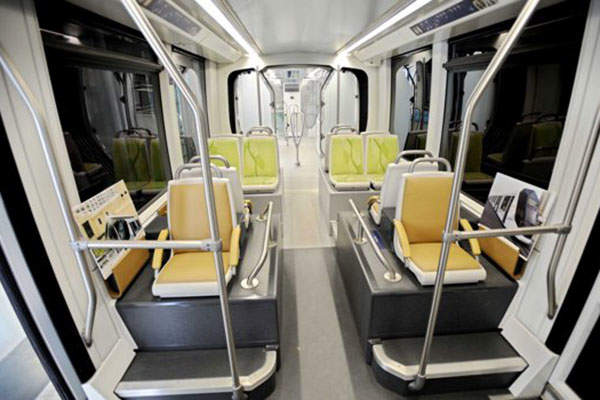The Dubai Tram project, which was formerly known as Al Sufouh Tram Project, is a 14.6km-long route that mainly follows the Al Sufouh Road, linking Madinat Jumeirah and the Mall of the Emirates with Dubai Marina and the Jumeirah Beach Residence. It is the first modern application of trams in the Gulf region and is being built in two phases.
Al Sufouh is a district adjoining the western Dubai seafront. It accommodates a number of free economic zones, several retail centres and is associated with the city’s booming tourist trade, notably the Palm Jumeirah development.
The first phase of the project was expected to open in April 2011, but was delayed due to recession. However, the project was later fast-tracked by the Dubai Roads and Transport Authority (RTA) and the tram was officially opened on 11 November 2014, starting service the next day.
The tram will serve 27,000 daily passengers initially and the ridership is expected to increase to 66,000 by 2020.
The project
Dubai is part of the UAE, a grouping of seven states formed in 1971, each ruled by their own emir and with a high level of autonomy. Abu Dhabi and Dubai, the largest city in the UAE, are developing the area as a regional centre with particular reference to transport, trade and tourism.
Part of the region’s transformation since the discovery of oil in the 1950s has been the application of fuel revenues to diversify the economy to achieve long-term prosperity and stability.
A number of building projects triggered a workforce demand, leading to rapid population increase. Growing by 292,000 during 2006, the population reached 1.42 million by the year’s end, with approximately 75% of residents being expatriates. Such growth in a very short time has caused extreme traffic-related problems such as long journey times, a high level of accidents and pollution.
In 2007 a government official identified congestion costs amount to 3.15% of the gross domestic product (GDP). If vehicle growth goes unchecked, the trend will lead to more than five million cars registered by 2020, their effect mainly concentrated on the urban area.
The RTA began to address the issue through renewal and expansion of the bus fleet, also with low-emission vehicles for taxi operations. Introducing light rail transport to Dubai, the RTA Metro system is due to begin revenue services in late 2009.
MVA consultancy and its parent company Systra have been involved with Dubai’s public transport planning since 2004, the principal rail outcome being the Metro project. The tram mode was recommended to match the district’s need for closely spaced stops to service commuter and tourism demand. It also will make RTA’s coverage more comprehensive for wholly public transport journeys.
First announced in April 2008, RTA signed a €550m contract in June with the ABS consortium for the delivery of the project’s first phase. The composition of ABS is Alstom of France (with approximately €300m of the total), Belgian construction company Besix and UK multi-sector operator Serco.
Line routes
Phase one of the project consists of a 10.6km-long track from Dubai Marina, passing through the Jumeirah Beach Road, Dubai Knowledge Village, Dubai Media City and Dubai Internet City, to the Tram Depot next to Dubai Police Academy. It has four elevated stations and seven stations at grade, with a standard platform length of 45m.
Phase two comprises a 4km-long track connecting the line with the Dubai Metro station at Mall of the Emirates.
Infrastructure
Al Sufouh is the world’s first open tramway to have all stops aligned with platform screen doors, which allows full air-conditioning of the system. Giving consistency with other RTA modes, including bus shelters, air-conditioning adds to customer appeal in regular temperatures around 40°C. Another innovation is the use throughout of Alstom’s catenary-free APS (Alimentation Par le Sol) system for electricity ground supply to trams whilst overhead.
Although APS has been in use on sections of the Bordeaux tramway since 2003 and is specified for other French cities such as Angers, Reims and Orléans, this is the first total system application. As with third-rail pick-up being specified for Dubai Metro, the authorities wished to avoid what is considered as visually intrusive overhead line equipment.
Mainly at surface level, there is some elevated track near the Marina. To encourage overall public transport use, interchange with the Metro Red Line is provided at two stations through pedestrian bridges, namely the Damac Properties and Jumeirah Lakes Towers. Station 9 connects with the Palm Jumeirah Monorail at the base of the Palm Jumeirah island on the Sufouh Street.
An 11-building depot that will house the 25 trams trains, an operation control centre, maintenance workshops, garage, stores and administrative buildings was also built.
Four covered air-conditioned footbridges with escalators serve the tram users. Two bridges were built over Al Sufouh Street to provide access to both sides of the road, while two others link Tecom district with the opposite side of the street and the Dubai Marina Mall.
Rolling stock
Alstom supplied 25 APS-fitted 100% low-floor Citadis 402 trams. A total of 11 trams were ordered as part of phase one and the remaining 14 will enter service as part of phase two. This seven-module 44m variant is in service with APS equipment in Bordeaux and also with overhead supply in Grenoble, Strasbourg and on Paris T3 where it is configured to carry just over 300 passengers.
Capacity in each direction for the Al Safouh project is put in excess of 5,000 passengers an hour. Each train can accommodate 408 passengers and includes gold and silver cabins, in addition to cabins solely for women and children.
The trains operate on power supplied by modern ground cable system and run at an average commercial speed of 20km/h. Dubai Tram is the first tram outside Europe to be powered by ground-electric cables extending throughout the tramway instead of catenary cables.
The trains are fitted with cutting-edge, tropicalised equipment designed to withstand the region’s harsh weather conditions, including temperatures above 50°C, 100% humidity and sandy atmosphere.
Signalling and communications
The signalling and ticketing system were supplied by Alstom, as was the control centre incorporated in the depot. Alstom equipped the network and trains with its communication based train control (CBTC) solution, Urbalis.

